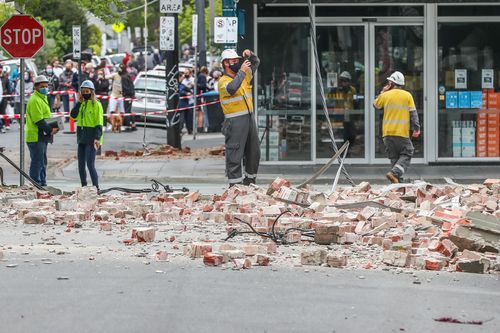In a update on Australia’s high-risk earthquake zones, one of the two areas includes Victoria’s Latrobe Valley, flagged as the site of a potential nuclear reactor by the Coalition.
Geoscience Australia this month released its National Seismic Hazard Assessment, which pinpointed the Latrobe Valley and Darwin as the two places in the country with a “higher risk of strong ground shaking”.
The new assessment – the first in five years – was based on new data and information from people who have felt an earthquake.

“We have a large body of information that helps us understand the physical characteristics of earthquakes in Australia and how they impact the landscape around us,” said senior seismologist Trevor Allen.
“Consistent with previous assessments, most areas around Australia are at low to moderate risk of experiencing strong ground shaking.
“However, our understanding has changed for some regions, such as Darwin and the Victorian high country.”
Allen stressed the change to the National Seismic Hazard Assessment doesn’t mean earthquakes will happen more often.
“We aren’t getting more earthquakes or stronger earthquakes all of a sudden,” he said.

“What has changed is how we understand and interpret the risk of earthquakes occurring and their consequent ground motions.”
Allen says data from recent seismic activity in Victoria and the Banda Sea, north of Darwin, had been analysed by Geoscience Australia.
“The recent earthquake activity in Victoria’s high country tells us a lot about the potential risk for future earthquakes in the region,” he said.
“We now know the level of risk in Darwin is higher than previously understood, because we have a much better understanding of how earthquakes in the Banda Sea – which are felt quite strongly in the area – affect the hazard.”
One of the seven sites across Australia earmarked to house nuclear power stations if the Coalition wins power at this year’s election, includes the Loy Yang Power Station – a coal-fired power station in the Latrobe Valley
The policy announced by Opposition Leader Peter Dutton last year has left many local residents concerned.
They and anti-nuclear campaigners point to the impact from the 2021 Woods Point earthquake, about 180km north-east of Melbourne.
The 5.9 magnitude quake was the largest in Victoria and damaged buildings in the epicentre of Mansfield.
But Seismology Research Centre chief scientist Adam Pascale says current designs for nuclear power plants enabled them to withstand the impact of earthquakes in Australia.
“The maximum credible earthquake for Australia is about 7.5, and current designs for nuclear facilities are such that they can withstand that magnitude of earthquake, depending on how far from the facility it is,” he said.
Nuclear plants across the world have withstood the effects of ground shaking from earthquakes, he says.





